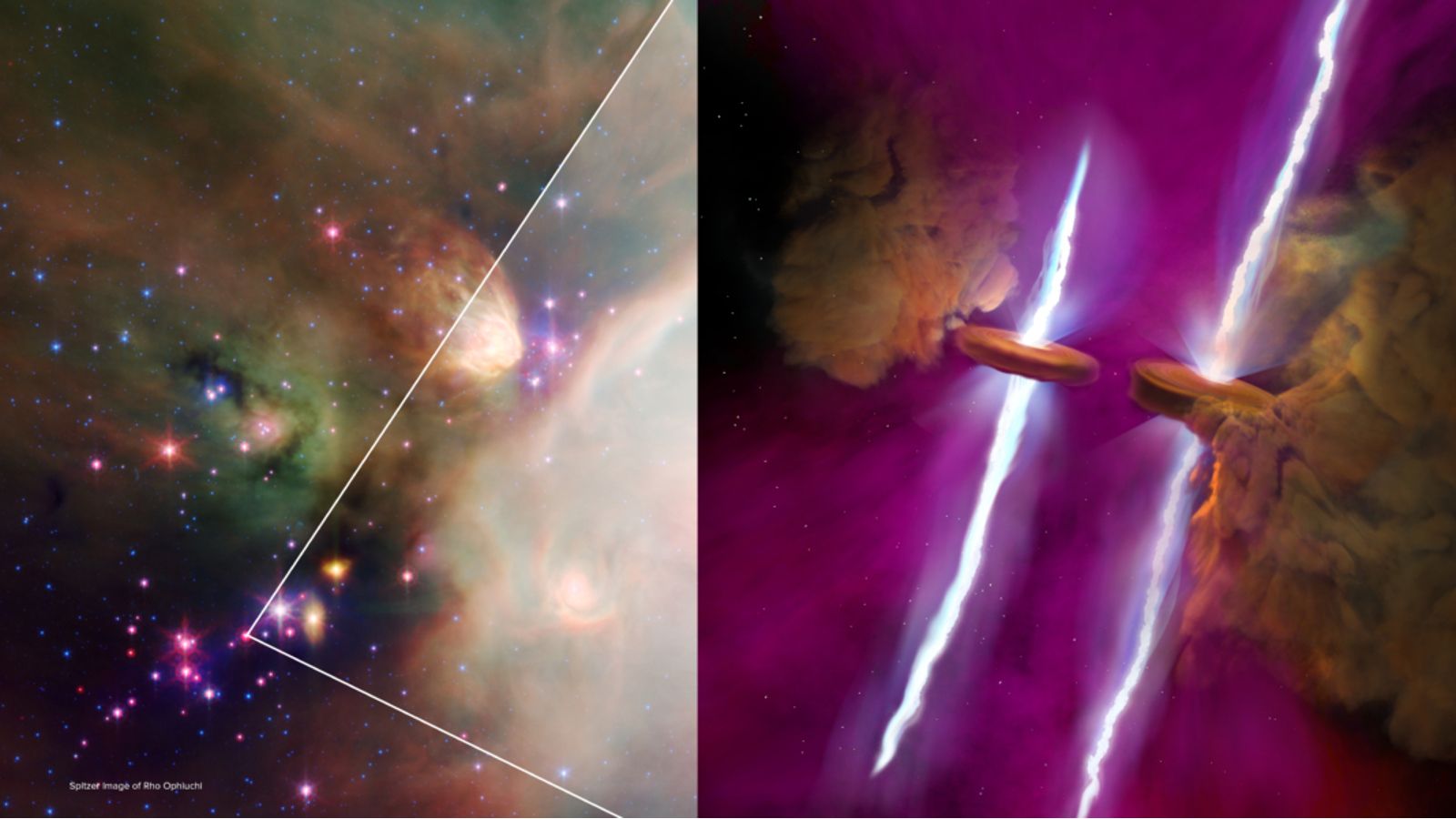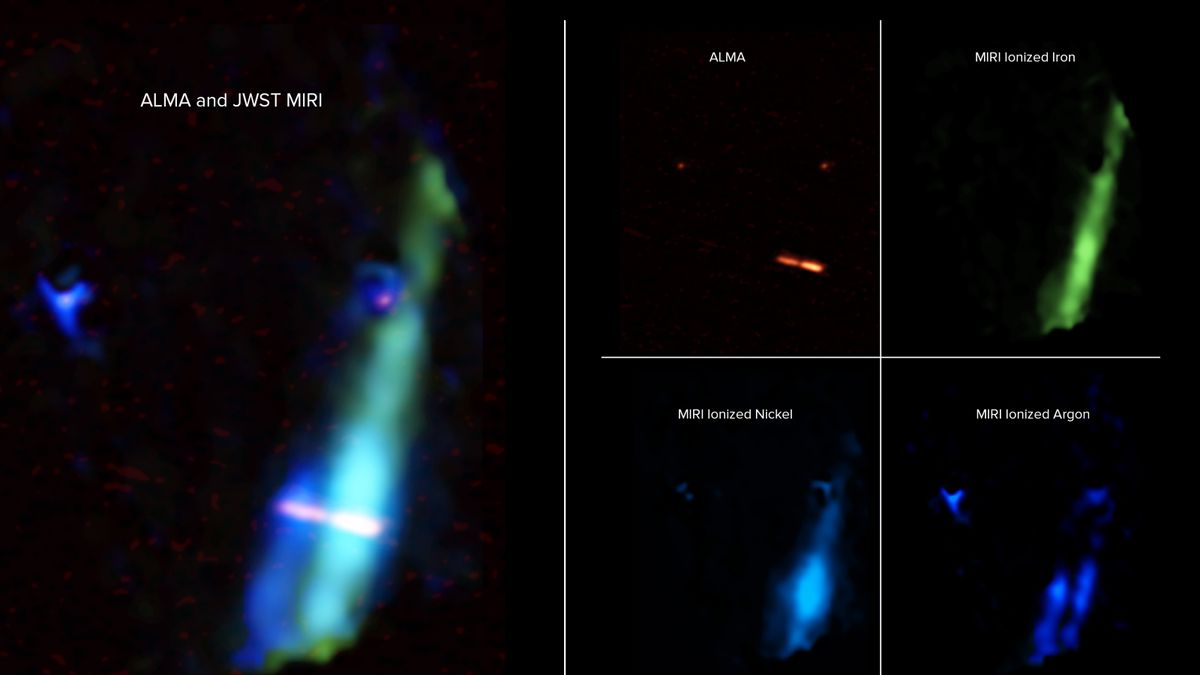Follow us on Google News (click on ☆)

Left: Image of WL20 in the Rho Ophiuchi cloud complex taken by NASA's Spitzer Space Telescope.
Right: Artistic representation of the two new stars and their stellar jets based on JWST data.
Credit: U.S. NSF/ NSF NRAO/B. Saxton.; NASA/JPL-Caltech/Harvard-Smithsonian CfA
Thanks to the James Webb Space Telescope (JWST), scientists were able to peer through a thick cloud of cosmic dust and identify these stellar twins in the WL 20 system, located about 400 light-years from Earth in the Rho Ophiuchi cloud complex. This system has been studied for fifty years, revealing the presence of numerous stars, including a young star called WL 20S surrounded by a protoplanetary disk.
Recent observations by the Atacama Large Millimeter/submillimeter Array (ALMA) suggested that this disk might actually be two distinct disks. The data from JWST confirmed this hypothesis, also revealing stellar jets composed of superheated material ejected by the magnetic poles of the forming stars.
Mary Barsony, an astronomer at the SETI Institute, described this discovery as "absolutely incredible." Researchers observed that the apparent star was actually two stars very close to each other. These findings were presented on June 12 during the 244th meeting of the American Astronomy Society.
These two stars, still unnamed, are binary stars, meaning they orbit each other. Researchers estimate they formed from a single protoplanetary disk that fragmented early in the star formation process.

The JWST captured infrared radiation emitted by the new stars and their stellar jets.
Credit: U.S. NSF/ NSF NRAO/ ALMA(ESO/NAOJ/NRAO)/ NASA/ JPL-Caltech/ JWST/ B. Saxton.
The protoplanetary disks of these stars are about 100 times wider than the distance between the Sun and the Earth (approximately 93 million miles or 150 million km). According to researchers, the stars are between 2 and 4 million years old, a tiny fraction of our Sun's 4.6 billion years. They also believe it is likely that planets will form from the remnants of these disks.